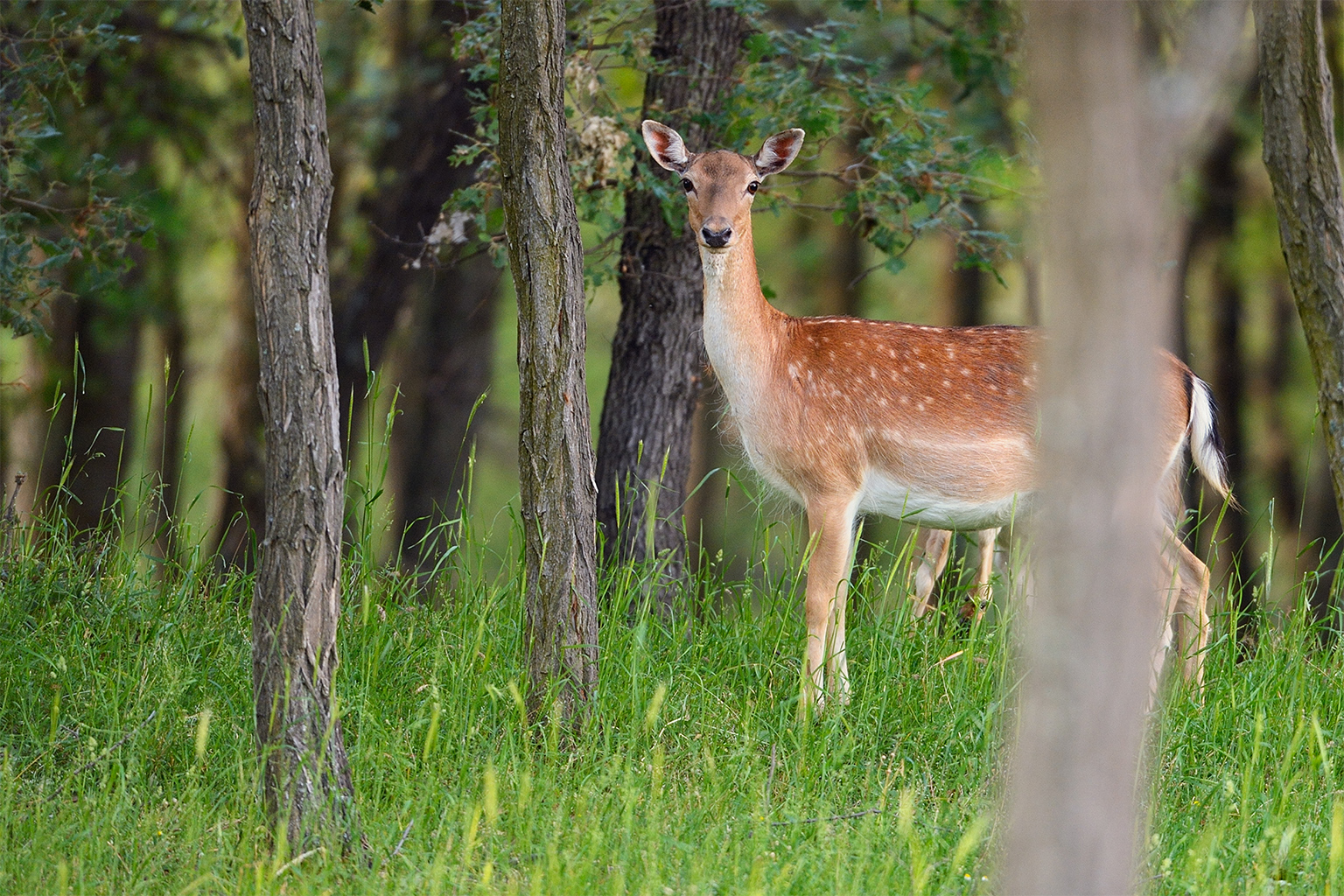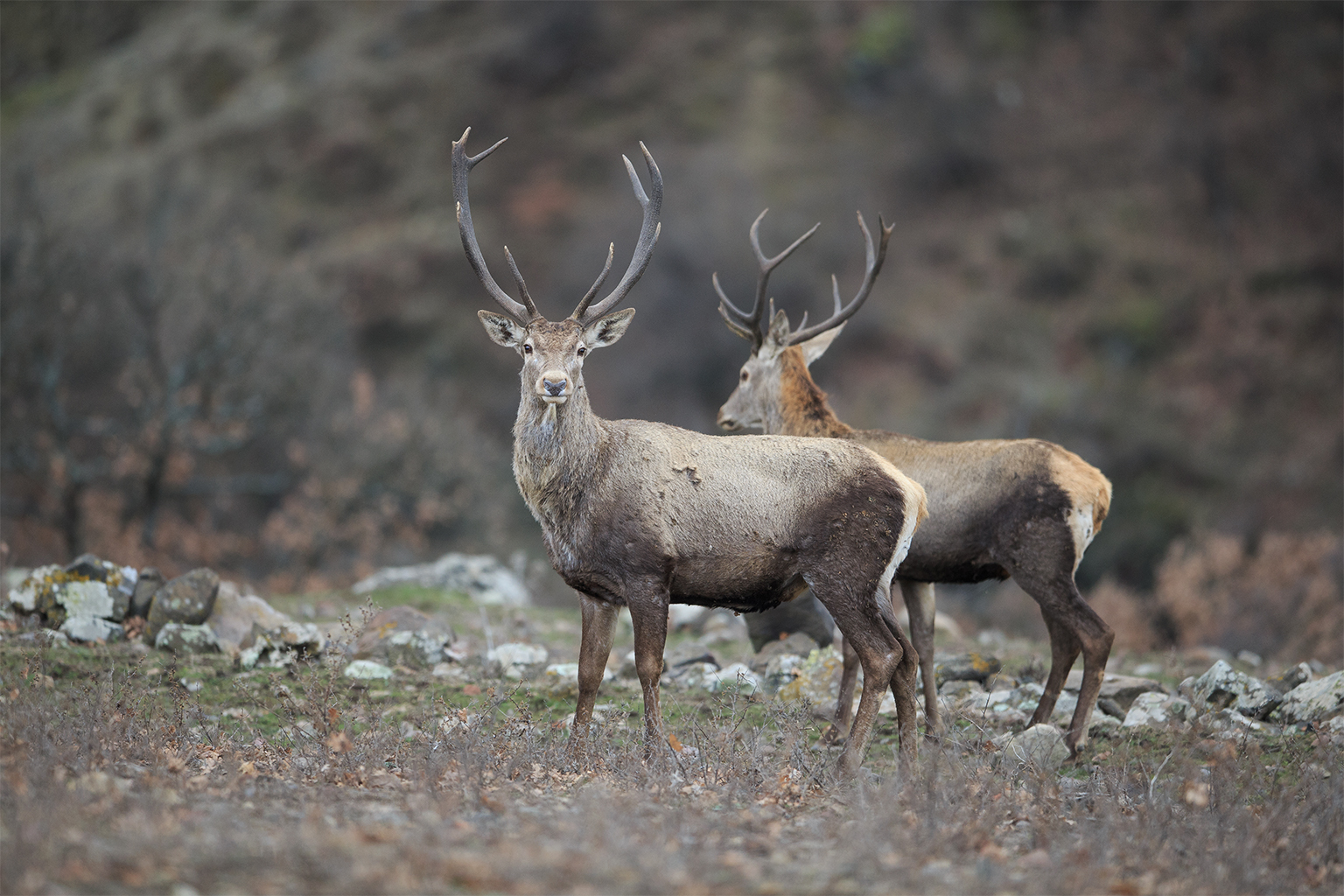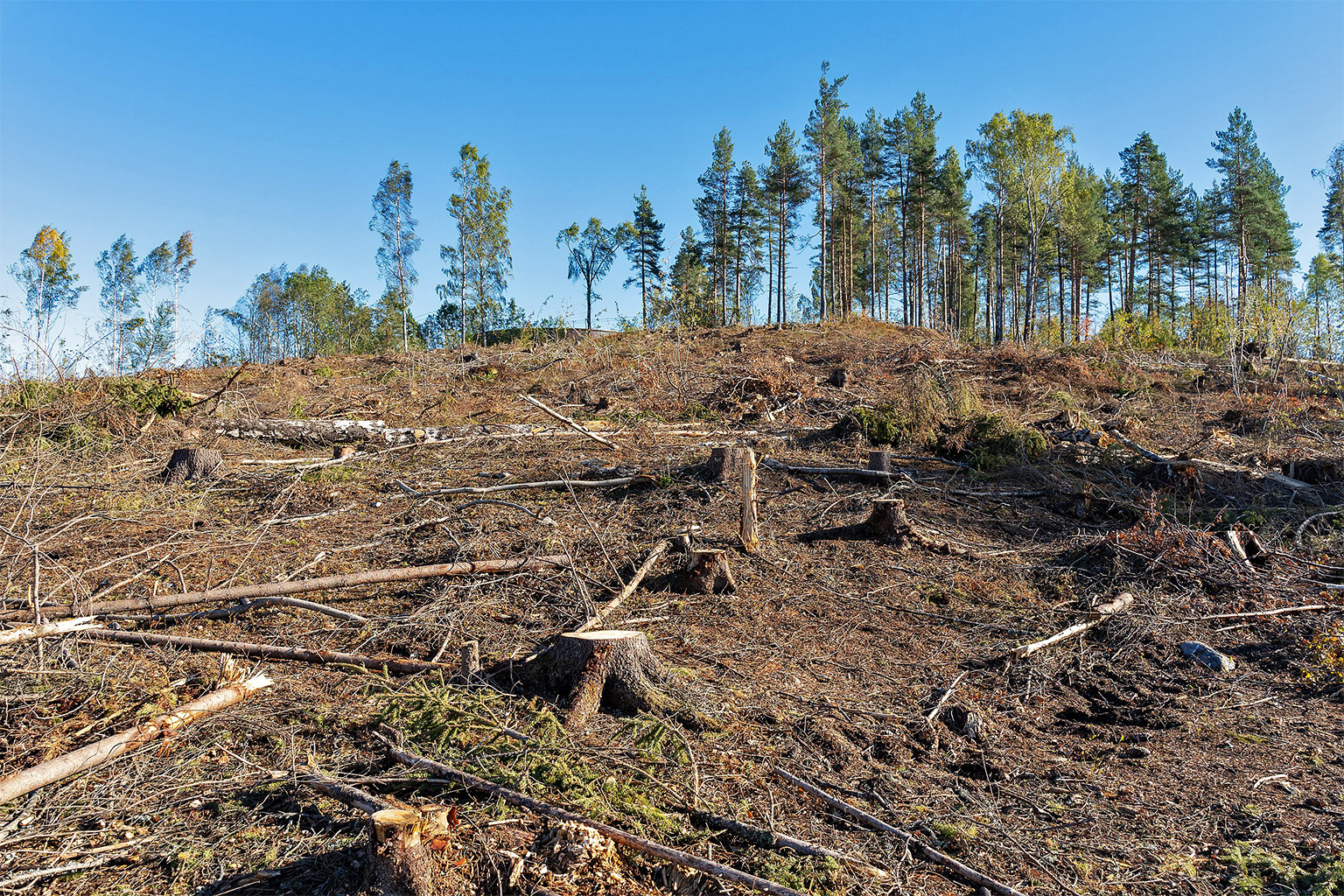- A new project is reintroducing key species into Europe’s forests to help restore natural balance and boost the ability of woodlands to store carbon. But there are concerns that unless such reintroductions are made on a much wider, landscape scale, they will have little positive impact in a region so dominated by humans.
- Others argue that the best way to improve Europe’s carbon storage potential is via heavy forest management, even going so far as to clear-cut some older stands and replace them with fast-growing new forests to encourage rapid carbon uptake, and using thinnings from timber operations to burn as biomass to make energy.
- This heavy management approach has raised deep concerns within the scientific community. Many researchers say this method ignores the growing body of evidence that plantation forest monocultures are not only bad for biodiversity and store less carbon, but also increase the risk of spreading devastating diseases.
- A middle ground could see more natural management of some forests where timber is harvested, while other woodland areas are left undisturbed, with a mixture of tree species, deadwood allowed to rot where it falls, and native animals reintroduced to help restore a natural balance and healthy ecosystems.
This May, Scarabaeus laticollis will return to France’s southeast and to one of Europe’s biggest plantation forests. Eighty of these lowly Old World dung beetles, first described by the naturalist Linnaeus in 1767, will be reintroduced at the Étang de Cousseau National Reserve as a first step to improving forest biodiversity there.
Unlike other dung beetles, S. laticollis not only rolls dung into neat balls, but also takes them underground, recycling important soil nutrients such as nitrogen and phosphorous, while dispersing grass and tree seeds. Importantly, local breeds of cattle — which aren’t given antibiotics, resulting in drug-free dung — have also been introduced to graze the land.
The dung beetle’s arrival marks the first release under the new European Wildlife Comeback Fund (EWCF) which aims at reintroducing a variety of native animals across the continent, including keystone species like the dung beetle, the red deer (Cervus elaphus) and fallow deer (Dama dama) in the Danube Delta, Eurasian lynx (Lynx lynx) in northwest Poland, and Sorraia horses (Equus ferus caballus) in Portugal’s Sintra-Cascais Natural Park. EWCF is a project of Rewilding Europe along with other conservation and funding partners.
A key but controversial justification supports these biodiversity enhancements, according to some conservationists. Restoring natural balance to forests has the potential to boost their ability to store carbon, says Sophie Monsarrat, Rewilding Europe’s rewilding manager.

“Rewilding is not just about predators and large mammals. It’s about bringing back functioning ecosystems, too,” Monsarrat explains.
Though she concedes that restoring large animals, including native herbivores, can seem counterintuitive to forest restoration, she underlines their value in curbing climate change. Large herbivores, it turns out, by browsing aboveground vegetation, boost root system carbon storage while making forests more resilient to global warming-intensified fires.
While John Linnell welcomes the EWCF program, this Norwegian Institute for Nature Research senior scientist questions whether animal reintroductions have any noticeable impact on the carbon cycle.
“Wildlife needs all the support it can get,” he agrees, but “There is a very delicate relationship between conservation science and the practice of conservation … When these kind of conservation efforts began, it was simply to bring the [missing] animal back. No one gave a thought to the ecological function or the carbon cycle or ecosystem services that it would give us … The motivation is simply it’s a nice animal and we want it back.”
These two widely opposing viewpoints arguing the effectiveness of restored biodiversity in combating climate change define an ongoing conservation debate as Europe launches a variety of rewilding experiments.

The ‘problem of scale’ vs. ‘proof of concept’
Europe has already enjoyed some success in bringing back its larger, iconic mammals. Once hunted nearly to extinction, an estimated 21,000 wolves (Canis lupus lupus) roam Europe today, as do a similar number of bears (Ursus arctos arctos), says Linnell.
But while that upward trend is good news, there is scant scientific evidence of noticeable significant ecological effects, Linnell cautions.
In Europe, he points out, farmland, forestry, roads and other infrastructure dominate the countryside. “Putting a wolf back in the landscape doesn’t stop any of this … The human footprint on the landscape is total … we are managing everything.” Human dominance, he says, is the primary factor creating Europe’s oversized carbon footprint.
“Spiritually, it [rewilding] has a huge effect, knowing that they [reintroduced animals] are out there doing their thing, but the ecological effect is insignificant. If you want to bring about changes to that landscape, then you’ve got to work with the policymakers around agriculture and forestry and infrastructure development — which influence everything.”
Linnell points to the bison (Bison bonasus) reintroduced to Poland’s Białowieża Forest, animals fenced in and at risk of being shot if they escape. “It’s not a [true] reintroduction,” he says, “It’s not restoring ecosystem processes, it’s modifying a little patch of forest … Scale is the missing thing in everybody’s perception” — and the major missing link between reintroductions and forest carbon storage.

Rob Stoneman isn’t so sure. As the director of landscape recovery at the British Wildlife Trusts, he agrees that global carbon recycling will be minimal for reintroductions not carried out at scale. But he contends that, even at a smaller scale, rewilding can act as an important proof of concept.
He points to an example in the English countryside, a small woodland where five reintroduced bison now roam a 50-hectare (124-acre) enclosure, part of the Wilder Blean project run by the Kent Wildlife Trust. That forest was once heavily coppiced by charcoal makers, explains Stoneman, an activity that encouraged a variety of biodiverse habitats, ranging from tall trees to scrub and open glades. But with that 19th-century industry gone, those habitats are becoming more homogenous and less diverse.
So the trust is investigating whether bison, along with Exmoor ponies and a breed of Iron Age pig, might perform a similar job to the charcoal makers, with the large mammals “managing” the forest to create a healthier, more diverse and resilient woodland.
If the project is successful, he says, then other species such as semi-wild cattle and horses could return to bigger landscapes such as the 56,600-hectare (140,000-acre) New Forest, in Hampshire. “Instead of us [the Wildlife Trusts] spending loads of money managing those landscapes to particular conservation objectives, we just establish natural processes [using] things like big animals [and] meandering rivers … That sparks up the ecosystem services that we want.”
Other reintroductions can help create better-functioning forests, he says. In the U.K., pine martens (Martes martes) are being brought back to prey on invasive gray squirrels (Sciurus carolinensis) that eat saplings and have blunted U.K. reforestation attempts. And Stoneman is not alone in wanting to see lynx return as a way of controlling destructive overbrowsing of the understory by deer.


Beavers (Castor fiber) are another important keystone species, which have now been successfully reintroduced across much of Western Europe. By girdling trees, they perform a similar role to human charcoal makers. Along with the new wetlands that beavers build via their natural damming skills, they create conditions that allow the land to store much more carbon. Their potential impact, along with other trophic rewilding, is covered in a recent paper published in the journal Nature Climate Change.
But again, the problem of scale gets in the way. At present, U.K. beaver releases have been restricted to a few sites in southwest England and on the River Tay in Scotland. “What we need to do is reintroduce beaver into every major river catchment,” says Stoneman. “If they return to the whole of the British landscape, then that’s a very different picture indeed.”
Looking at that bigger picture, Stoneman says, we need to learn how to live with species like bison again so that their populations can be increased to help curb climate change in a significant way. In Romania’s Carpathian Mountains, for instance, reintroduced bison roam freely, and organizations like Rewilding Europe, for which Stoneman previously worked, are partnering with local communities to show people the positive effects of reintroductions, including ecotourism. “It’s really important that we relearn how to live with wildlife and accept that a wildlife-rich landscape is a really good landscape,” he says.
Bison are archetypal ecosystem engineers, browsing, grazing, opening up new sunnier spaces, and moving nutrients around the forest via their dung. This activity creates the conditions for new growth, while improving soil structure and underground fungal activity.
“Healthy soils are really important in terms of increasing the amount of carbon that a woodland can store. But it’s a tricky piece of science,” Stoneman concedes. It’s also a piece of science that has opened a major schism in the academic world.

Clear-cutting the forest to save its carbon?
Ernst-Detlef Schulze is founding director of the Max Planck Institute for Biogeochemistry in Germany, and his position on forests and carbon storage runs strongly counter to that of most conservationists. Schulze believes the best way to increase the carbon storage potential of forests is not through species reintroduction, but through intense human management.
When forests are no longer aggressively managed, he argues, they enter a steady state, which means the amount of carbon remains about the same. Clear-cutting can change this, he says, because regrowing young trees absorbs more carbon through photosynthesis than is stored in the soil of a mature forest.
Its preferable, he claims, to cut a wide area and use the timber in long-lived products such as roof trusses, where the carbon is locked away for the life of the building. That’s the best way to secure a forest’s long-term carbon-sequestering potential, he argues. Using wood in construction also reduces the need for energy-intensive building material such as concrete and steel, he adds.
Schulze also argues in favor of the benefits from using trees, particularly limbs and thinnings left over from timber operations, to burn as biomass to make energy. Biomass can help cut fossil fuel use, he says. Through a policy of cut and regenerate, he notes, Sweden has reduced its fossil fuel consumption by more than 50%, while maintaining a greater volume of wood in its forests.
As part of a group of 500 researchers and scientists, Schulze published these views in an open letter to the EU last year, joining the discussion for a new forestry policy for 2030 that contributes to the EU’s biodiversity objectives and greenhouse gas emissions reduction targets. Schulze says that policy needs to recognize the contribution of the entire forest-based value chain for achieving a sustainable and climate-neutral EU economy by 2050.
The letter brought an immediate response from a second group of more than 550 scientists, including Per Angelstam, professor of forest and natural resource management at the Swedish University of Agricultural Sciences, who says that “clear felling is not good for biodiversity, conservation or carbon.”

Angelstam notes that the carbon storage role of soil is crucial, and that forests are key for mitigating climate change not because of the speed of carbon uptake as trees grow, but because of the amount of carbon already stored in both living and dead biomass, and particularly in boreal forests, in the soil.
“To clear fell and then replant is an effective way of sequestering carbon from the atmosphere [over the long term], but leaving old forests standing is a better way of ensuring that more carbon is retained in the soil,” he says.
“It’s really complicated … It’s about system limitations [and] the timeframe you are talking about,” he continues. It also depends on your starting point, he said. If, as they have done in southern Sweden, spruce is planted on open land that was once grazed, then you improve the carbon storage. In contrast, in northern Sweden, where old-growth forests are being harvested for the first time, and deadwood cleared, then the trend is the opposite.
Angelstam also questions the claim that long-lived wooden products effectively lock carbon away, pointing to research showing that in Sweden just 10% of cut timber goes into these products. The rest is destined for pulp mills and power stations. Across Scandinavia, he adds, forests are split roughly 50/50 between private individuals and forestry companies. “The forest industry’s aim is to produce value-added products … They are not necessarily interested in the forests themselves. They are interested in raw materials.”
A growing body of evidence backs Angelstam’s views. Research shows that natural forests store more carbon for longer than aggressively managed plantation forest monocultures, which lack biodiversity. Also, burning forest biomass to make energy has been scientifically debunked as being a “carbon-neutral” fuel, while the current EU and U.K. climate policy turns a blind eye to counting biomass power plant carbon emissions. “In fact, biomass burning power plants emit 150% the CO2 of coal … per unit energy produced,” according to the Partnership for Policy Integrity. In 2021, a group of more than 500 scientists signed a letter calling on world leaders to stop treating the burning of biomass as carbon neutral.

Finding common ground
Linnell appears to occupy something of the middle ground in the debate: “The [forest] carbon storage and also most of the other ecosystem services will be influenced by the way you actually conduct forestry — what trees you plant, when you cut them, how you cut them, how you build the access roads, how you drain, how you fertilize, how you manage via hunting the ungulate populations that live in the forest. The presence of lynx, bison or dung beetles are just tiny little drops in the ocean compared to chainsaws and forestry machines,” he says.
Take clear-cutting, for example, he continues. From a biodiversity point of view, herbivores love it because in a few years they will have a huge area of new vegetation to browse, while predators such as wolf and lynx will hunt anywhere. However, “hundreds and thousands of beetles, mushrooms, fungi and worms … are devastated by it.”
“If you want to conserve that 99% of the biodiversity that we don’t find charismatic, or attractive or interesting, then habitat management becomes really important. But it’s not influenced by whether you have a wolf or not … it’s influenced by the fact that you just drove across it with a forestry machine and cut down a square kilometer.”
But perhaps Schulze and Angelstam are closer on some points than at first appears. In Germany, says Schulze, beech is the dominant tree, growing up to 40 meters (130 feet) high and crowding out other trees. “If we leave the forest alone, beech would kill most other tree species and other plants,” he says and there would be no ash, maple or birch. “If we want to maintain the diversity as exists in Europe, you have to do management.”
Angelstam supports the idea of a mixed forest, with some trees cut and others left in protected areas, with deadwood allowed to drop and rot. This would also avoid many of the hazards associated with any form of plantation forest monoculture, he says.
Actively managing for forest diversity can also be a good hedge against disease. In Europe, bark beetle disease is spreading, along with fungi that attack and kill young Scots pine. “In the Czech Republic and Germany, the bark beetle has triggered a switch back to old mixed forests,” he says, which once dominated the landscape before the glass and iron industries replaced it with plantations of fast-growing Norway spruce.
Restoring native trees to create a mix of species “would be a good idea both in terms of securing more habitat for biodiversity and also making the forests more resilient,” Angelstam says.
“It’s about ‘closer to nature forest management,’” he concludes. “Read the site and make sure you plant tree species that are most adapted.” These same sorts of complexities also need to be considered when weighing the impacts of wildlife reintroductions.



